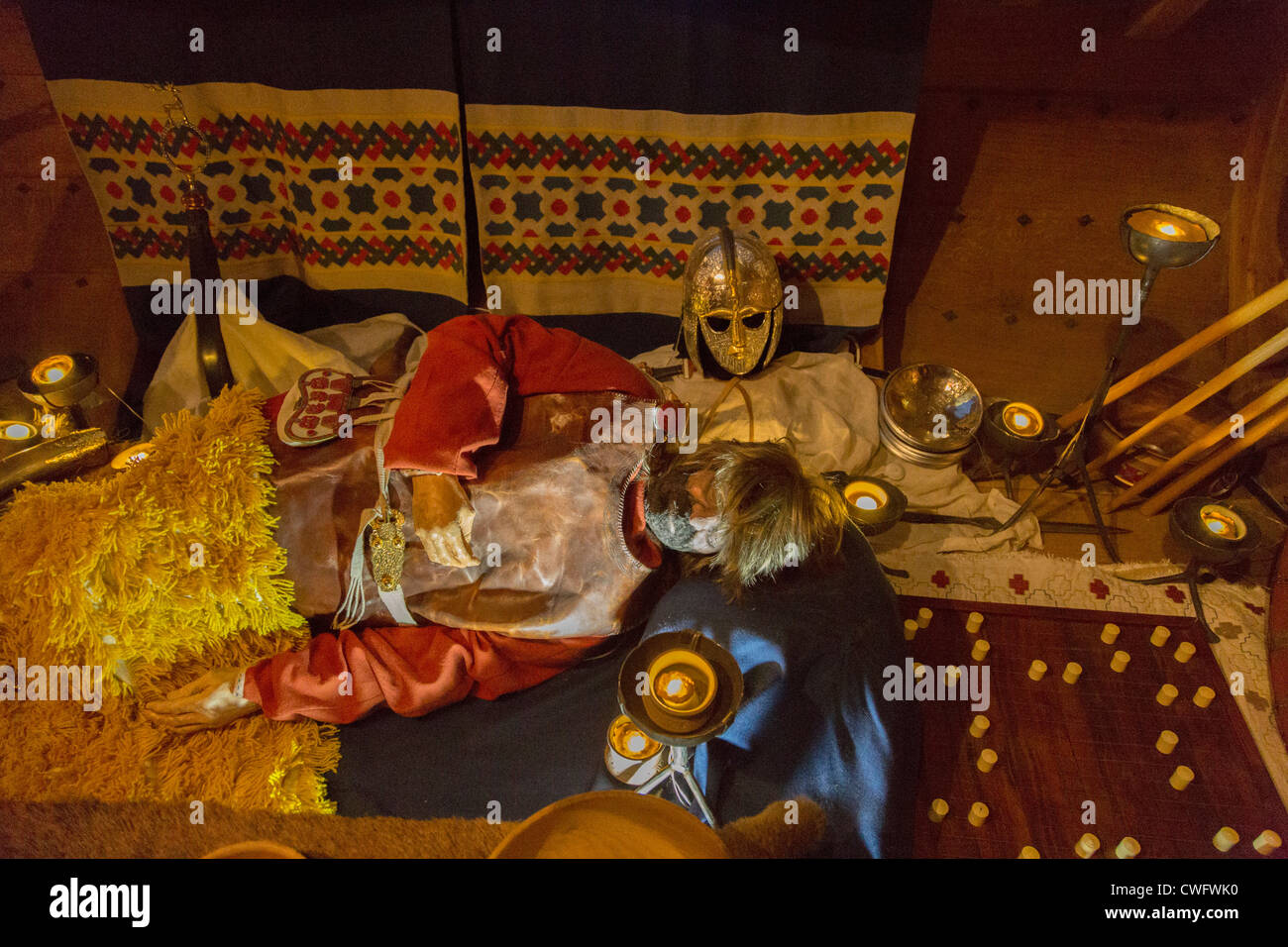The Sutton Hoo Ship Burial: Evidence Of Sixth-Century Cremation Practices

Table of Contents
The Sutton Hoo Ship Burial: Context and Dating
The Sutton Hoo ship burial was discovered in 1939 by Basil Brown, an amateur archaeologist. Its excavation, undertaken between 1939 and 1940, revealed an astonishing collection of artifacts within the remains of a large wooden ship. The burial is dated to around 625 AD, a period of significant transition in Anglo-Saxon England. This dating is based on several key methods:
- Radiocarbon dating techniques: Analysis of organic materials found within the burial provided a crucial timeframe.
- Analysis of artifacts and their stylistic parallels: The style of the grave goods, including weaponry, jewelry, and ceremonial objects, allowed archaeologists to compare them with similar items from other sites, helping pinpoint its chronological position.
- Geographical location and its implications for understanding regional variations in burial practices: Situated in East Anglia, the burial offers unique insights into the burial customs of this specific region, potentially highlighting regional variations within broader Anglo-Saxon practices. The location itself suggests a connection to a powerful East Anglian kingdom.
Absence of Cremated Remains at Sutton Hoo and its Significance
Paradoxically, the Sutton Hoo burial lacks direct evidence of cremation. This absence, however, doesn't diminish its importance in understanding sixth-century cremation practices. The prevailing theory suggests the burial belonged to a high-status East Anglian king or leader. The opulent grave goods—including a magnificent helmet, a shield, and numerous pieces of exquisite jewelry—indicate an elite status.
- The presence of a richly furnished grave suggests elite status, possibly indicating a shift away from cremation among the upper classes during this transitional period. Cremation may have been associated with less powerful individuals or different social strata.
- Comparison with other contemporary burials highlights variations in burial rituals. The Sutton Hoo burial stands in contrast to some simpler burials of the same era, showcasing the complexities of social hierarchies and their reflection in funerary practices.
- The symbolic significance of the ship burial itself, and its possible connection to funerary rites, suggests a complex ritual that involved significant investment and preparation. The ship itself may symbolize a journey to the afterlife, a common theme in many pagan cultures.
Contemporary Evidence of Cremation in Sixth-Century Anglo-Saxon England
While Sutton Hoo lacks cremated remains, numerous other archaeological sites across England provide ample evidence of cremation during the sixth century. These sites offer crucial comparative data:
- Specific examples of cremation burials (site names and locations): Sites like Spong Hill in Norfolk, and various other cemeteries across East Anglia, have yielded numerous examples of cremated remains within urns or other containers.
- Description of grave goods found (e.g., urns, personal adornments): These burials frequently contain grave goods, often simpler than those at Sutton Hoo, including pottery urns, personal ornaments, and tools reflecting the deceased's life.
- Analysis of variations in cremation practices based on social status: Even in cremation burials, variations in grave goods suggest distinctions in social status, mirroring the trend observed in inhumation practices.
The Transition from Pagan to Christian Burial Practices
The sixth century in England witnessed the gradual adoption of Christianity. This religious shift significantly impacted burial customs, leading to a decline in cremation and the rise of inhumation (earth burial).
- Timeline of Christianization in Anglo-Saxon England: The conversion wasn’t uniform or immediate. Different regions adopted Christianity at different rates, influenced by missionary activity and political factors.
- Comparison of pagan and Christian burial rituals: Pagan burials, often including cremation, were frequently accompanied by grave goods reflecting beliefs about the afterlife. Christian burials, in contrast, often emphasized the soul's journey to heaven, with a less pronounced focus on material possessions.
- Evidence for the coexistence of pagan and Christian practices during this transitional period: Archaeological evidence suggests a period of overlap, with both cremation and inhumation practices continuing for some time.
Conclusion
The Sutton Hoo ship burial, while not directly showcasing cremation, provides a critical lens through which to understand sixth-century Anglo-Saxon burial practices. Its opulence and the broader archaeological context reveal the complex transition from pagan traditions, often associated with cremation, to the emerging Christian influences that favored inhumation. By comparing Sutton Hoo with other sites containing cremated remains, we gain a nuanced understanding of the evolving beliefs and social structures of this period. Further research into similar Anglo-Saxon sites and a deeper analysis of the artifacts from Sutton Hoo will continue to refine our understanding. Learning more about the intricacies of Sutton Hoo ship burials and similar discoveries is vital to understanding the complex tapestry of Anglo-Saxon culture and the shift in burial rituals during this fascinating period.

Featured Posts
-
 Wedbushs Apple Outlook Bullish Despite Price Target Reduction
May 25, 2025
Wedbushs Apple Outlook Bullish Despite Price Target Reduction
May 25, 2025 -
 Picture This Prime Video A Complete List Of Songs In The Soundtrack
May 25, 2025
Picture This Prime Video A Complete List Of Songs In The Soundtrack
May 25, 2025 -
 Arda Gueler Ve Real Madrid E Uefa Dan Bueyuek Darbe Sorusturma Basladi
May 25, 2025
Arda Gueler Ve Real Madrid E Uefa Dan Bueyuek Darbe Sorusturma Basladi
May 25, 2025 -
 Myrtle Beach Officer Involved Shooting 1 Dead 11 Injured
May 25, 2025
Myrtle Beach Officer Involved Shooting 1 Dead 11 Injured
May 25, 2025 -
 Novo Ferrari 296 Speciale 880 Cv De Potencia Hibrida
May 25, 2025
Novo Ferrari 296 Speciale 880 Cv De Potencia Hibrida
May 25, 2025
Latest Posts
-
 Atletico Madrid Hasret Sonunda Bitti Yeniden Kazaniyor
May 25, 2025
Atletico Madrid Hasret Sonunda Bitti Yeniden Kazaniyor
May 25, 2025 -
 Atletico Madrid In 3 Maclik Kara Serisi Sonlandi
May 25, 2025
Atletico Madrid In 3 Maclik Kara Serisi Sonlandi
May 25, 2025 -
 3 Mac Sonra Galibiyet Atletico Madrid In Zaferi
May 25, 2025
3 Mac Sonra Galibiyet Atletico Madrid In Zaferi
May 25, 2025 -
 Atletico Madrid In 3 Maclik Hasreti Bitti
May 25, 2025
Atletico Madrid In 3 Maclik Hasreti Bitti
May 25, 2025 -
 Atletico Madrid 3 Maclik Galibiyetsizligi Son Buldu
May 25, 2025
Atletico Madrid 3 Maclik Galibiyetsizligi Son Buldu
May 25, 2025
